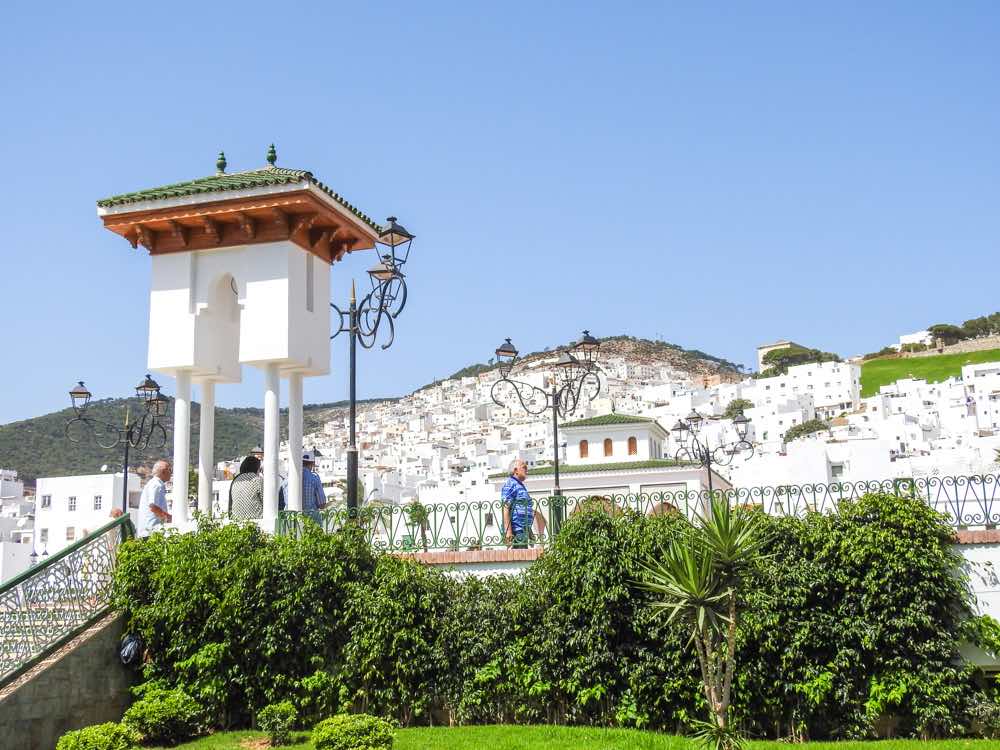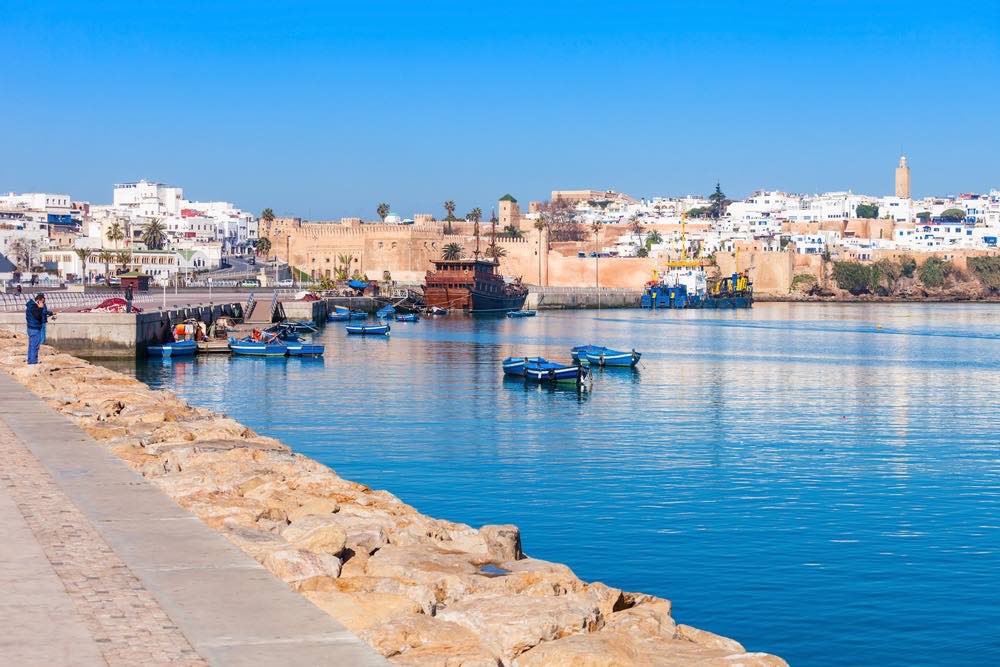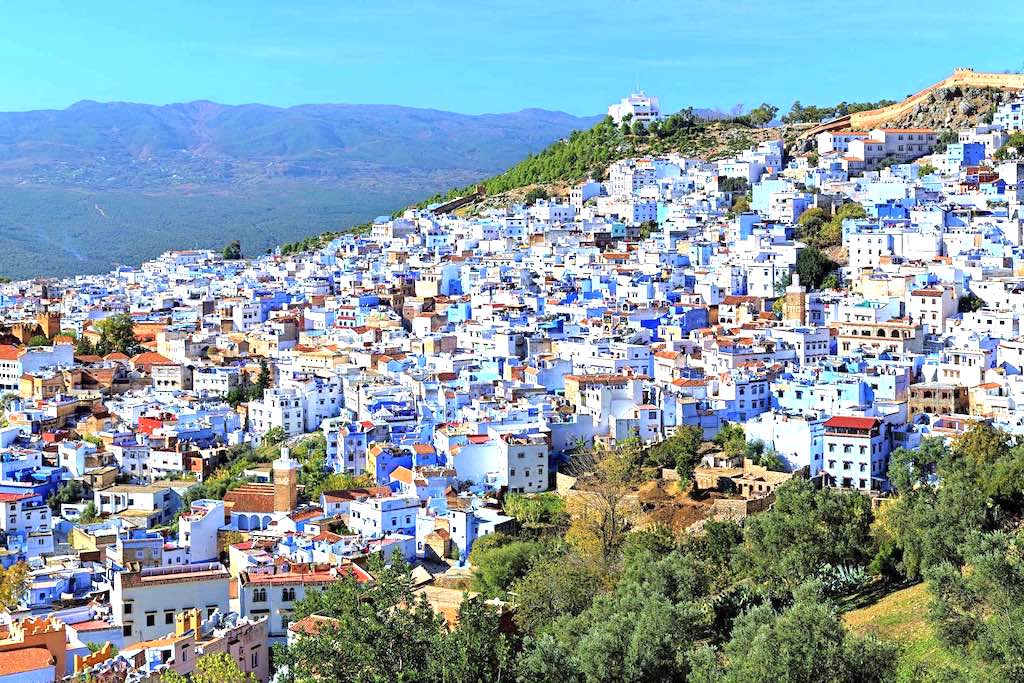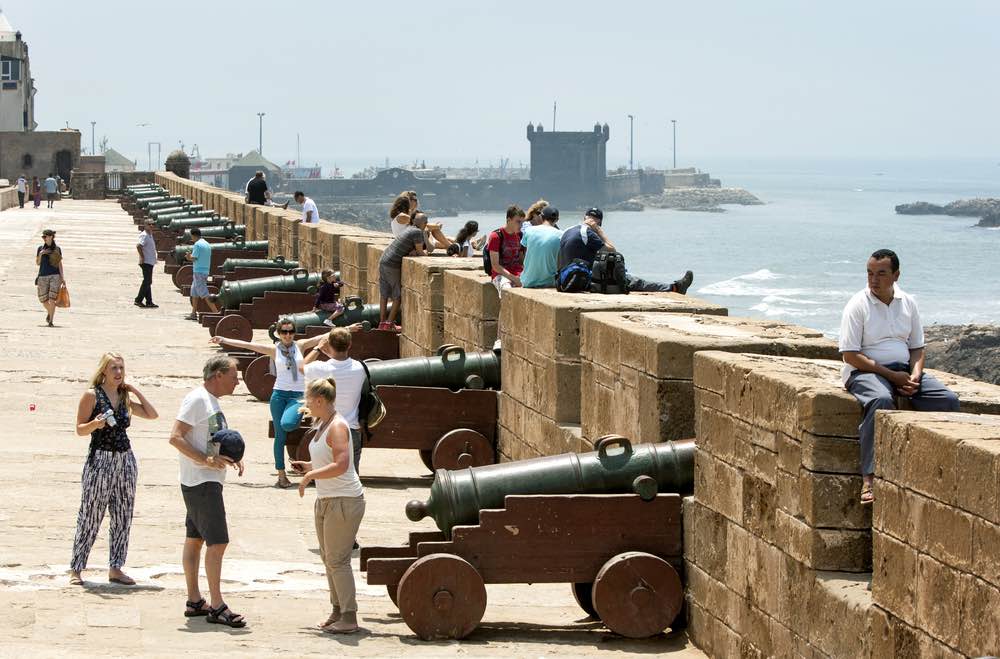To one side is the pure turquoise Mediterranean Sea, to the other is the Riff Mountains, and the rest is covered in beautiful almond and orange trees…. Welcome to Tetouan!
The city of Tetouan itself is populated by white buildings on the side of a hill with the river Martil weaving through the valley. There is a clear Andalucian influence to the city, as it was founded by refugees looking for shelter during the Iberian conflicts of the 15th century. The city would become the administrative capital of Morocco’s Spanish Zone and this dual heritage is still clearly visible half a century after the Declaration of Independence.
Tetouan is lively to say the least, with a number of things to discover such as the Royal Palace and a medina classed as a UNESCO World Heritage Site. The shopping offers a mixture of traditional and modern goods, and Moroccans and tourists alike love the nearby beaches. Don’t forget about the stunning Mediterranean climate that sees average temperatures of 22 Celsius during the winter and 35 Celsius during the summer.
Staying in Tetouan
Tetouan might not be a major destination just yet, but travellers will still have plenty of options when it comes to accommodation. If you’re looking to stay near the sea you’ll find several apartments and hotels on the beachfront in Martil.
Getting to Tetouan
Tangier is the train station and airport closest to Tetouan, but you shouldn’t have a problem reaching the city by road. Tetouan is a transport hub with regular bus services going to and from Tangier, Chefchaouen, and Ceuta. The bus station is right in the heart of the city, providing you with plenty of access to everything you could want to see. There are many private transfer services offered through taxis, and these present another affordable choice.
Beaches
The northern coast of Morocco is a strip of beautiful Mediterranean beaches. The beach at Martil is the one closest to Tetouan and it’s one of the most popular destinations among locals. Further north is Cabo Negro, which is the beach to go to if you want to avoid crowds. The beach is also popular for horse riding. Keep going north and you’ll reach Mdiq, a modern seaside resort offering tourists plenty of things to do.
Heritage
The Tetouan of today is built on the backs of three cultures. The city was founded by a combination of Jewish and Muslim refugees fleeing southern Spain during the fifteenth century
The Spanish would reach Tetouan in the middle of the 19th century and hold it for three years, before occupying the city once again in 1913 when it was made the administrative centre of the Spanish Protectorate Zone until Morocco achieved independence in 1956.
There are signs of this mixed heritage everywhere in Tetouan, particularly in the medina where the different Jewish, Muslim, and Amazigh sections are obvious to see. The Church of Bacturia holds a Mass each Sunday, and one can still see the Jewish mellah. While Arabic is the official language of Tetouan, there’s still the occasional bit of Spanish to be heard as you’re out and about.
If you want to explore more of the heritage of the city then take a trip to the Ethnographic Museum. Here you can find a range of Riffian and Jibala traditional crafts. You could also journey to the Ensanche on the Place el Jala to see a range of Moroccan artefacts from Roman and Phoenician times.





